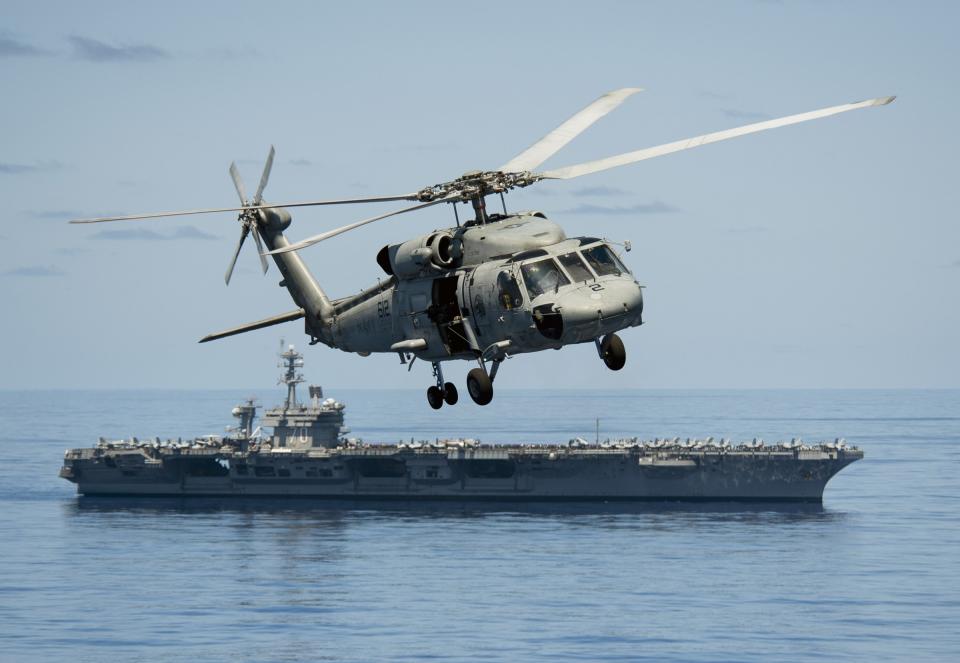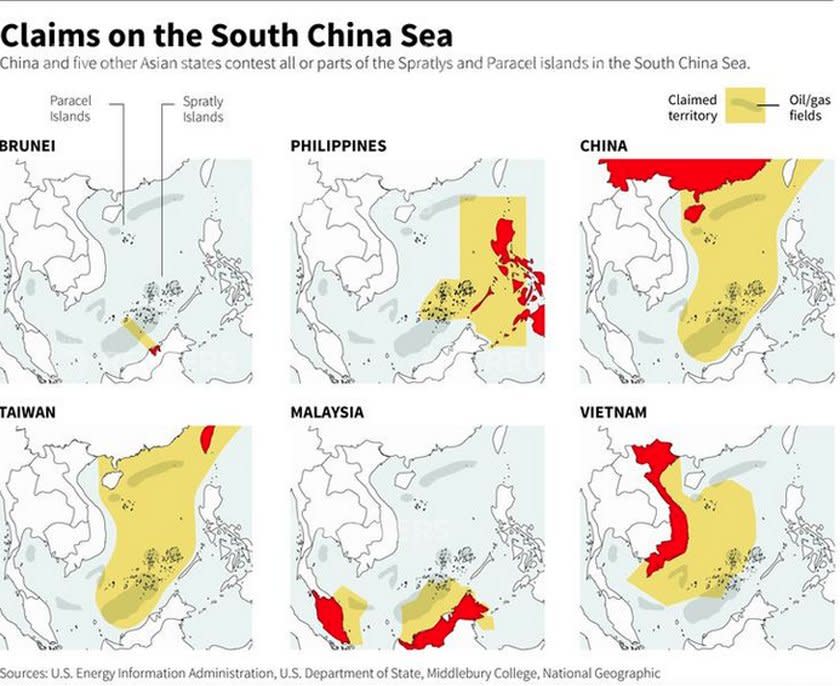The US just sent an aircraft-carrier strike group to mix it up in the South China Sea

Official US Photograph - US Navy News Stand
The US Navy's Carrier Strike Group 1 recently arrived in the South China Sea to promote freedom of travel on the high seas, as China tightens its grip on the region with its increasingly potent navy.
The strike group includes the aircraft carrier USS Carl Vinson, an entire destroyer squadron, and an additional Arleigh Burke class destroyer.
A US Navy carrier strike group represents one of the most powerful naval units in the world, and China has taken notice.
"China respects and upholds the freedom of navigation and overflight in the South China Sea, which countries enjoy under international law, but firmly opposes any country's attempt to undermine China's sovereignty and security in the name of the freedom of navigation and overflight," said Geng Shuang, a spokesman China's Foreign Ministry, according to CNN.
Indeed, China's military doctrine even goes as far as permitting a first strike against threats to China's sovereignty, but the USS Carl Vinson has been operating in the South China Sea for decades.
But the move to promote freedom of navigation in the South China Sea comes as China has all but nailed down the region as firmly within its control. China owns a series of artificial islands, which satellite images show it has militarized with missile launchers and radar outposts.

Mass Communication Specialist 2nd Class James R. Evans, US Navy
The US takes no side in the dispute between China and six other nations over who owns what in the region but has repeatedly expressed interest in preserving freedom of navigation in an area with vast oil reserves and about $5 trillion in annual shipping.

Reuters
At an Association of Southeast Asian Nations summit on Sunday, leaders from the region tried to develop a framework for a code of conduct in the heavily contested South China Sea, but found the process "has become virtually moot and academic," former Philippines National Security Adviser Roilo Golez told ABS-CBN news
"I expect China to still resist the finalization and approval (of a code of conduct) so that China can further militarize the artificial islands with the placement of offensive medium-range and long-range missiles," said Golez.
The US deployment to the South China Sea comes just days after Chinese warships withdrew from military drills in the region.
See Also:

 Yahoo News
Yahoo News 
